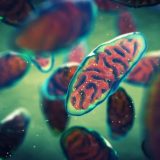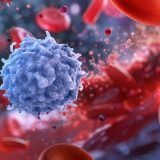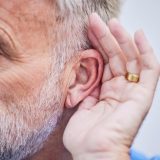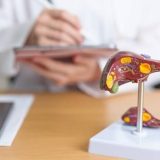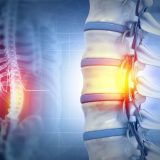Stem Cell Blog
Употребата на матичните клетки од папочна врвца рапидно се зголемува. Пред 10 години крвта од папочна врвца можеше да лекува околу 40 состојби, но денес таа бројка е над 80. Со нетрпение очекуваме нови терапии за болести и нарушувања како што се дијабет, аутизам и мозочен удар, можете да бидете во тек со најновите случувања во регенеративната медицина на нашиот блог за матични клетки.
02/02/2024 BlogStem Cell NewsStem Cell Therapies
This month sees two important missions lifting-off into space, both of which will carry out pioneering stem cell research.
The first of these has already launched. On 18 January, Ax-3, the third mission by private company Axiom to be launched using Space X rockets, departed for the International Space Station. [1]
Aboard were four astronauts who over the course of two weeks will carry out a variety of experiments in microgravity.
Amongst them will be several significant ones relating to stem cells.
The Sanford Stem Cell Institute (SSCI) operating out of the University of California, San Diego will be paying close attention to the astronauts’ findings in relation to their investigation into tumour organoids. [2] [3]
By analysing the growth rates of cancer stem cells, SSCI hope to build on previous Axiom missions and shed light on how cancer develops in order to identify early warning signs.
Aboard the same mission, the National Stem Cell Foundation (NSCF) are seeking to utilise 3D brain models to help ascertain key onset markers of neurodegenerative diseases. [4]
NSCF Researchers hope that by analysing the effects of microgravity on the 3D models, which are derived from the induced pluripotent stem cells of patients with either Parkinson’s or primary progressive multiple sclerosis, they’ll be able to better understand how these diseases develop.
In this, the third Axiom mission of its kind, researchers hope to take advantage of the different rates at which stem cells develop in space to point out what the future of treatment looks like for some of the most harmful diseases on Earth.
The second significant space mission to launch this month will be on the 29 January.
This mission, which has as its main payload materials for the resupply of the International Space Station, will investigate how the absence of gravity plays a role in bone loss. [5]
A team from the Mayo Clinic in Florida will analyse the effect of gravity, or lack thereof, on mesenchymal stem cells derived from bone marrow.
Their findings could end up having an impact on the course of clinical trials for a variety of conditions, such as osteoporosis, that take advantage of the powerful regenerative potential of these type of stem cells to regrow bone tissue.
This mission will be the first of two, with the next scheduled tentatively for the end of the year. This second flight should seek to investigate the effect of microgravity on different cell types that similarly occasion either bone formation or loss.
These experiments in space show the truly pioneering research taking place in the field and illustrate the huge potential these incredible cells have for humans on Earth now, and possibly in space in the near future.
Find out more about what stem cells can do by requesting your FREE Welcome Pack below.
Sources
[1] Ax-3 Mission Research. Axiom Space. https://www.axiomspace.com/missions/ax3/research
22/01/2024 BlogStem Cell NewsStem Cell Therapies
Although hair loss is common, it can have a huge impact on a person’s self-esteem and, subsequently, their physical and mental wellbeing.
New trials exploring the potential applications of stem cells in treating hair loss offer hope for those who are suffering both now and in the future.
A new study conducted by researchers at the Mayo Clinic has found that stem cell treatment for patients with advanced heart failure offers an improved quality of life.
As many as 100,000 people are admitted to hospital in the UK every year due to heart attacks [1]. Heart attacks can lead to heart failure, where damage to cardiac muscles makes it harder for blood to be pumped around the body.
The first phase of a clinical trial hoping to treat Multiple sclerosis (MS) with stem cells has yielded promising results.
The early-stage trial was conducted by researchers at the University of Cambridge, along with scientists from the University of Milan Bicocca and La Casa Sollievo della Sofferenza hospital in Italy. [1]
20/01/2024 BlogNewsStem Cell News
Aditi Shankar is just eight years old, but she is a pioneer of British medicine thanks to a new way in which she has received a kidney transplant. But first, a little about the girl.
Aditi has the rarest form of dwarfism in the world, Schimke immuno-osseous dysplasia (SIOD). The condition is so rare that it affects only one in one to three million people worldwide. A genetic disorder, SIOD leads to sufferers needing hip transplants, bone marrow transplants, and kidney failure. Unfortunately, the life expectancy of those with this condition is incredibly short at 11 years of age.
20/01/2024 BlogNewsStem Cell News
We’re excited to share some promising results from a recent clinical trial that holds great promise for treating Type 1 diabetes.
This ground-breaking research was presented at the American Diabetes Association‘s 83rd Scientific Sessions on June 23, 2023. The study involved six patients who were administered varying doses of stem cell-derived beta cells. The results were nothing short of remarkable.
20/01/2024 BlogStem Cell News
Stem cell banking gives your child access to a huge range of emerging stem cell therapies that may otherwise be unavailable to them. The idea is that as they age their perfectly matched, banked stem cells are ready and waiting to repair damaged tissue, for example regenerating cartilage if they suffer from arthritis, or treat debilitating and ultimately terminal age related conditions such as Parkinson’s.
20/01/2024 BlogNewsStem Cell News
The doctor who treated seven-time World Champion driver, Michael Schumacher with stem cell therapy following his traumatic brain injury is now using the same treatment to help treat coronavirus.
Back in June, renowned clinical cardiac surgeon Professor Philippe Menasché performed pioneering stem cell treatment on the Formula 1 icon. Schumacher is said to have received transfusions of stem cells to reduce inflammation and help regenerate his nervous system after sustaining a life-changing brain injury almost 7 years ago.
20/01/2024 BlogStem Cell News












